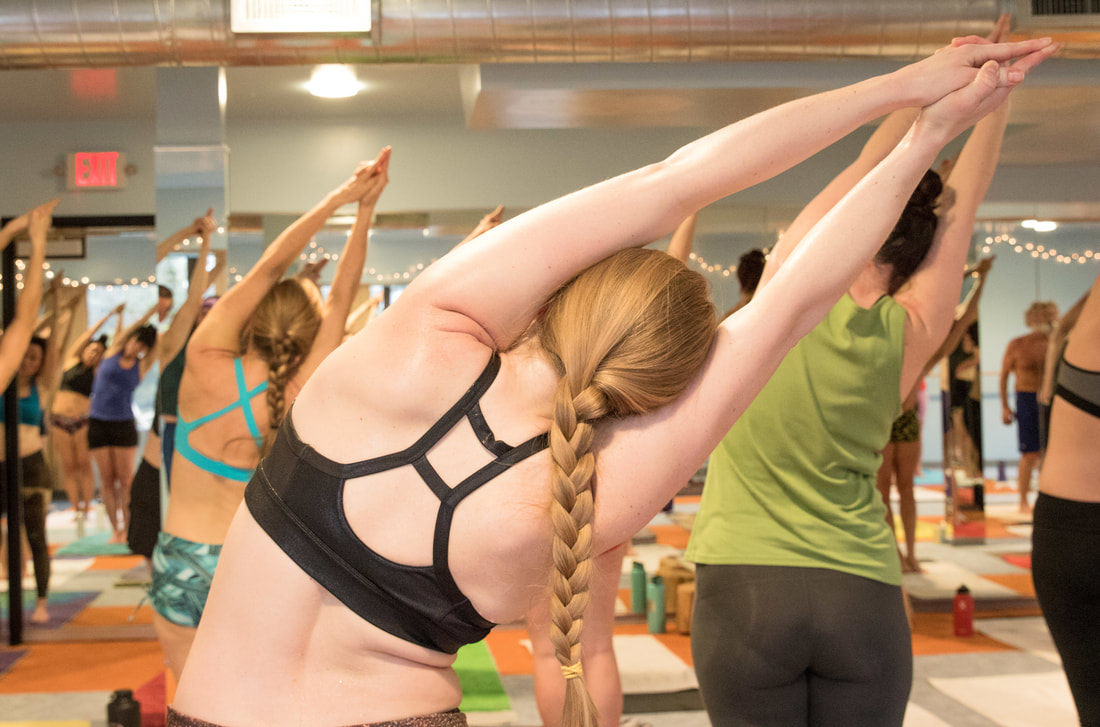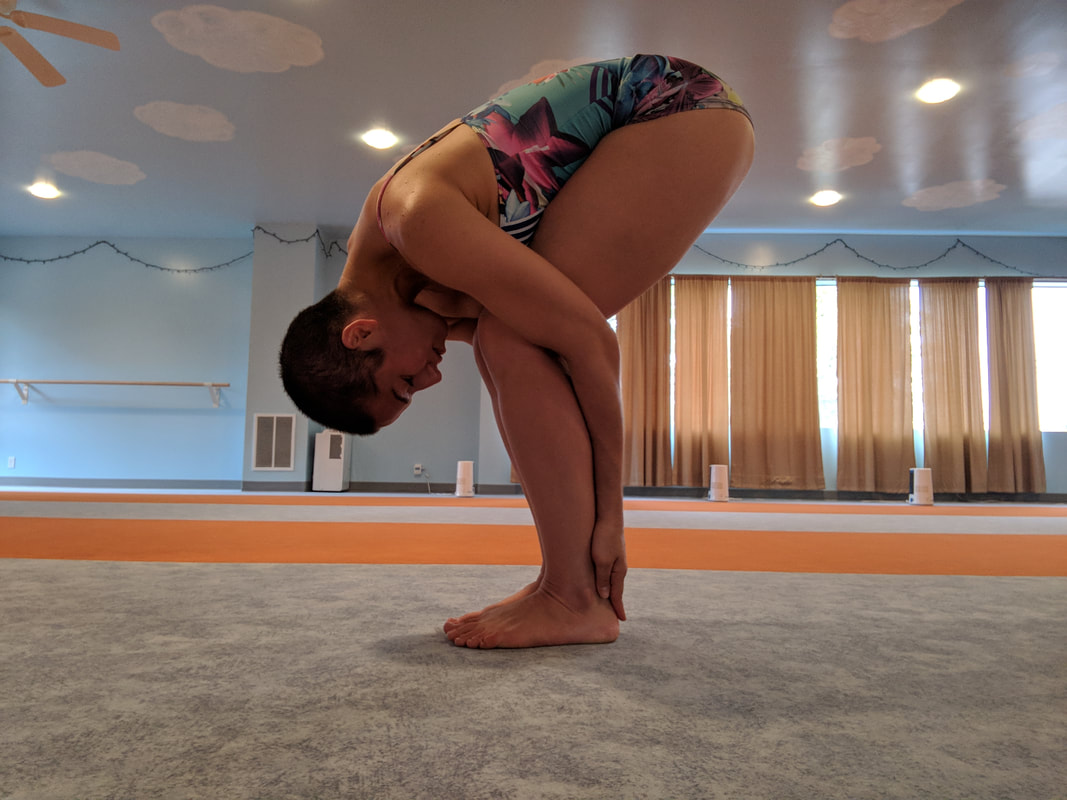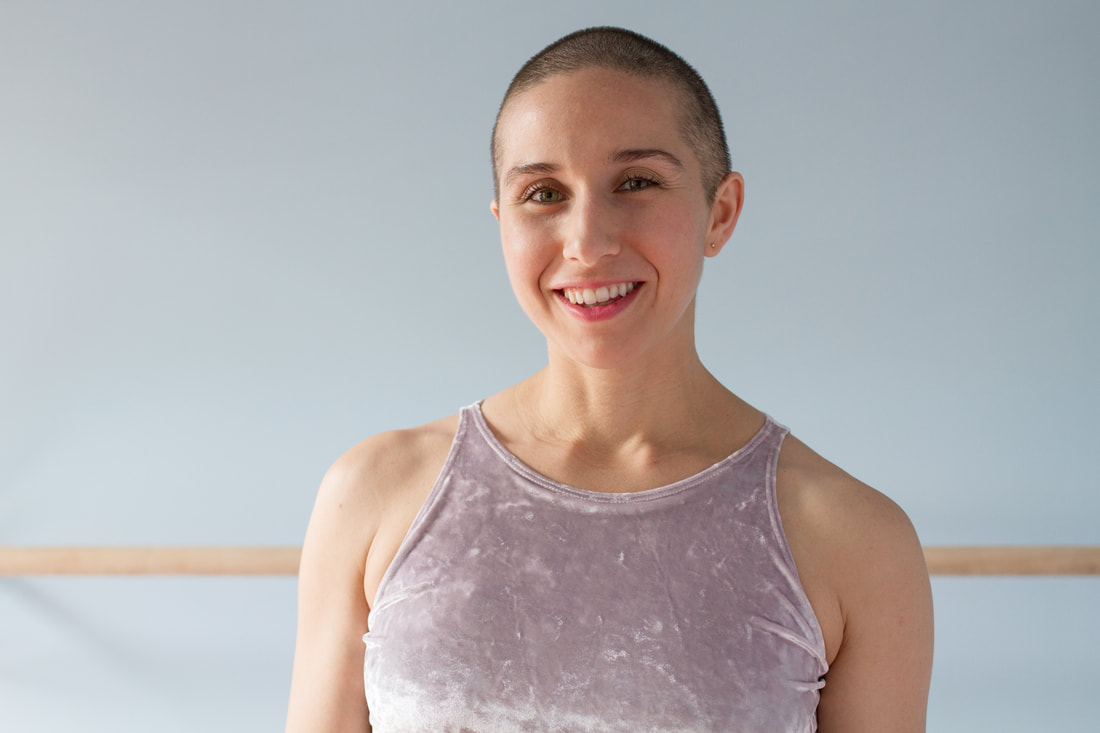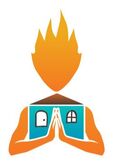|
Cobra pose is the greatest for preventing and relieving lower back pain and tension! Practicing with impeccable technique will allow you to get all of the goody out of it. Check out this video for tips: For more on the benefits of the Cobra, check out this post from way back! For more spine strengthening, come to any class on our schedule. ;)
0 Comments
Don't miss attending our Posture Clinic with Josh on Saturday, October 13! Free for BYSJ members, $20 everyone else.
Once all major joints of the body have been warmed up by practicing Pranayama breathing and the first few postures, you are ready for Eagle pose, garudasana! This pose opens up the joints of the ankles, knees, hips, shoulders, elbows and wrists. By twisting your limbs "like ropes" Eagle pose creates compression of blood and lymph flow headed to spots like your legs, kidneys and the lymph nodes in your armpits. Hold the posture very still while breathing calmly, so that when you release it your elevated heart rate will send a boost of high-speed circulation to those areas. Notice a white mark on your thigh after you come out of Eagle? That's a good indicator that you’ve been maintaining a strong compression. What's that you say? Your arms won't twist like ropes? Here's a quick video on what to do for this (very common) "issue"... Now that we've cleared up what to do with those pesky arms, here are a couple key aspects of Eagle pose and more tips to help you get the most out of your efforts:
Using leverage to promote good alignment and open joints. When you move your knees to the right and upper body to the left to get your feet, knees, elbows and hands in one line, you are using the leverage of one limb against to create the compression effect I mentioned above and open up your major joints. The key to not falling over while you make these adjustment is keeping your (especially lower) abdominal muscles tight and your upper body lifted away from your thighs. It's a backbending pose! Many beginners tend to lean or even hunch their bodies forward while they're setting up their Eagle, in an effort to pull their elbows down. Don't let this happen to you! Keep your upper body (when you hear the cue "upper body" in class, think mainly lower ribs upward) leaning back throughout the posture, which means (although you'll end up looking straight ahead) your spine is actually in a backward bending position. This position strengthens back and core muscles, releases tension in your lumbar spine, and compresses the kidneys. Pro Tips:
As the first posture in the Bikram yoga class, the job of Half Moon pose (ardha chandrasana) is to get your spine feeling out its range of motion in a bunch of directions, right off the bat. By stretching up out of your waist, then slowly bending your upper body to the right while pushing your hips to the left beyond your perceived flexibility, you will create an incredible stretch down the side of your body. This side-bending action either stretches or tones every muscle in the torso, increases the lateral flexibility of the spine, opens up the hips and trims the waistline. Oh, what a feeling- and then you get to do it to the left! TIP: Half moon is the very first posture in the class, so there's no need to push it super hard, especially in the first set! Your body is not quite warmed up yet, so "take it easy, honey." Remember that the first set of every pose is diagnostic- it helps you figure out where your body is in the present moment. Second set is therapeutic- based on what you discovered in the first set, you decide whether to push a bit further, or back off a little more. Your breathing is an excellent indicator of which way to adjust- if you really can't keep your breathing normal (like you're watching TV) then you've done too much! Back off.) Once we have stretched to both sides, the third part of Half Moon is backward-bending. Your instructor will warn you, "Your back is going to hurt, don't be scared!" PSA: That doesn't mean that if a part of your body screams in sharp pain, that we think you should push through it! Not at all. This statement is simply a "heads up" that it's normal for the backbend to be uncomfortable- or even "hurt," in the sense of "ouch, I don't usually use those muscles!" Backbending can be a pretty uncomfortable position at first. It requires you to simultaneously use a lot of strength in your legs, hips and back while also relaxing the neck and stretching the arms and shoulders back as far as you can. The challenge (and any "hurt") is worth it though, because this first backbend is unbeatable at warming up the back muscles and de-stiffening (that's a technical term!) your spine for class, while opening the heart and chest. Be sure to keep your eyes open, so you don't get dizzy. At this point you have moved your spine straight up, side to side, and backward. Next comes Hands to Feet pose (padha hastasana.) This forward-folding posture continues to stretch the spine while beginning to work on stretching the sciatic nerve, muscles, tendons and ligaments of the legs. TIP: If you can't grab your heels from behind, bend your knees and try wrapping your elbows behind your calves. Then hold the backs of your ankles and start to straighten out the legs, keeping your grip by keeping pressure with the palms against the ankles. Eventually, you may be able to grab underneath your heels- for now just get as close as you can! Besides the tremendous stretching, Padha hastasana also helps improve overall circulation to the legs, sends a nice rush of blood to the head, and strengthens biceps, lattisumus dorsi, quadriceps, hands and fingers. Always remember to keep your breath moving calmly, in and out of your nose- a smiling happy face can help. :)
|
AuthorHHY Founder, Yoga Business Coach, yoga-doer and life-lover, Kay Afif! Categories
All
|




 RSS Feed
RSS Feed
